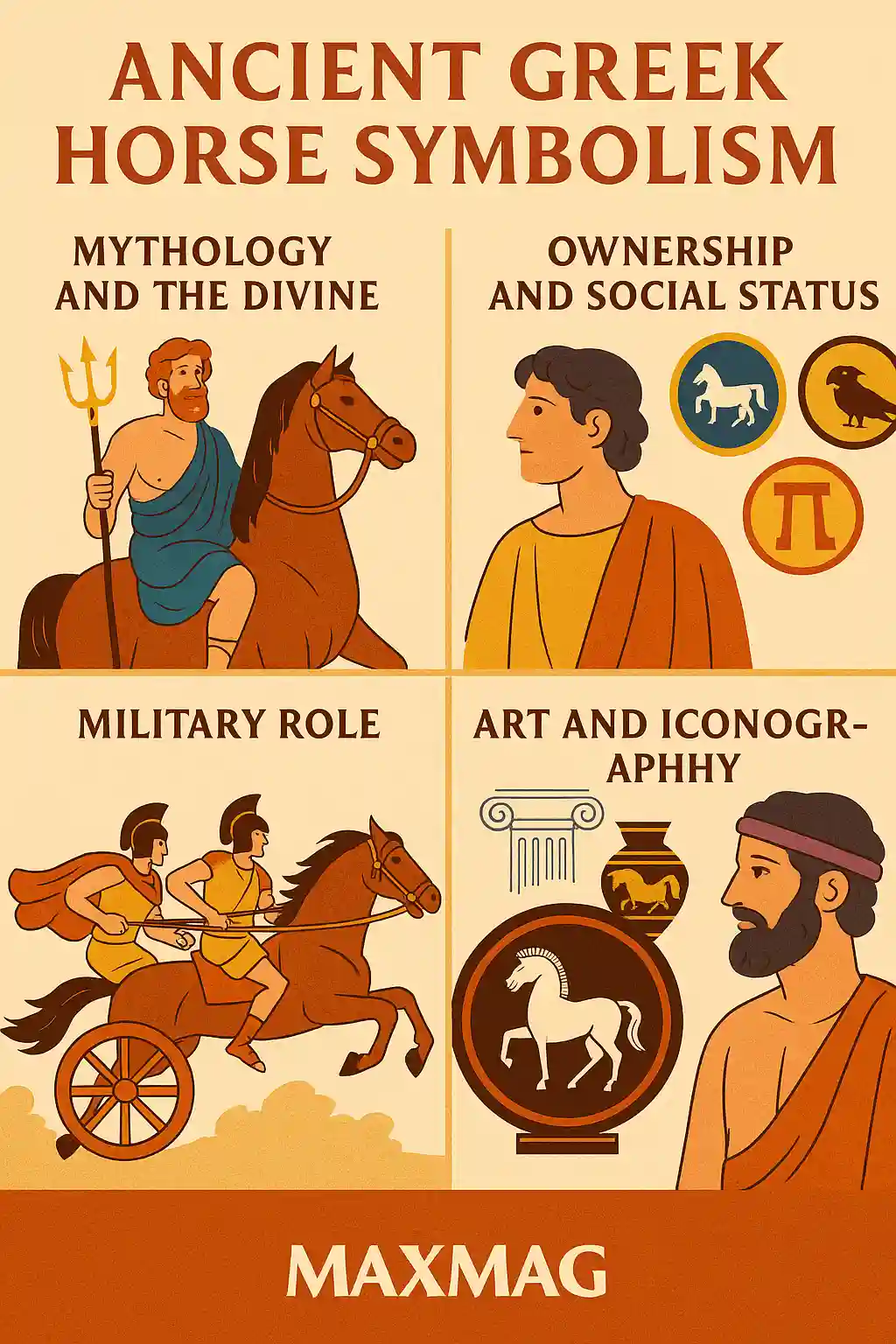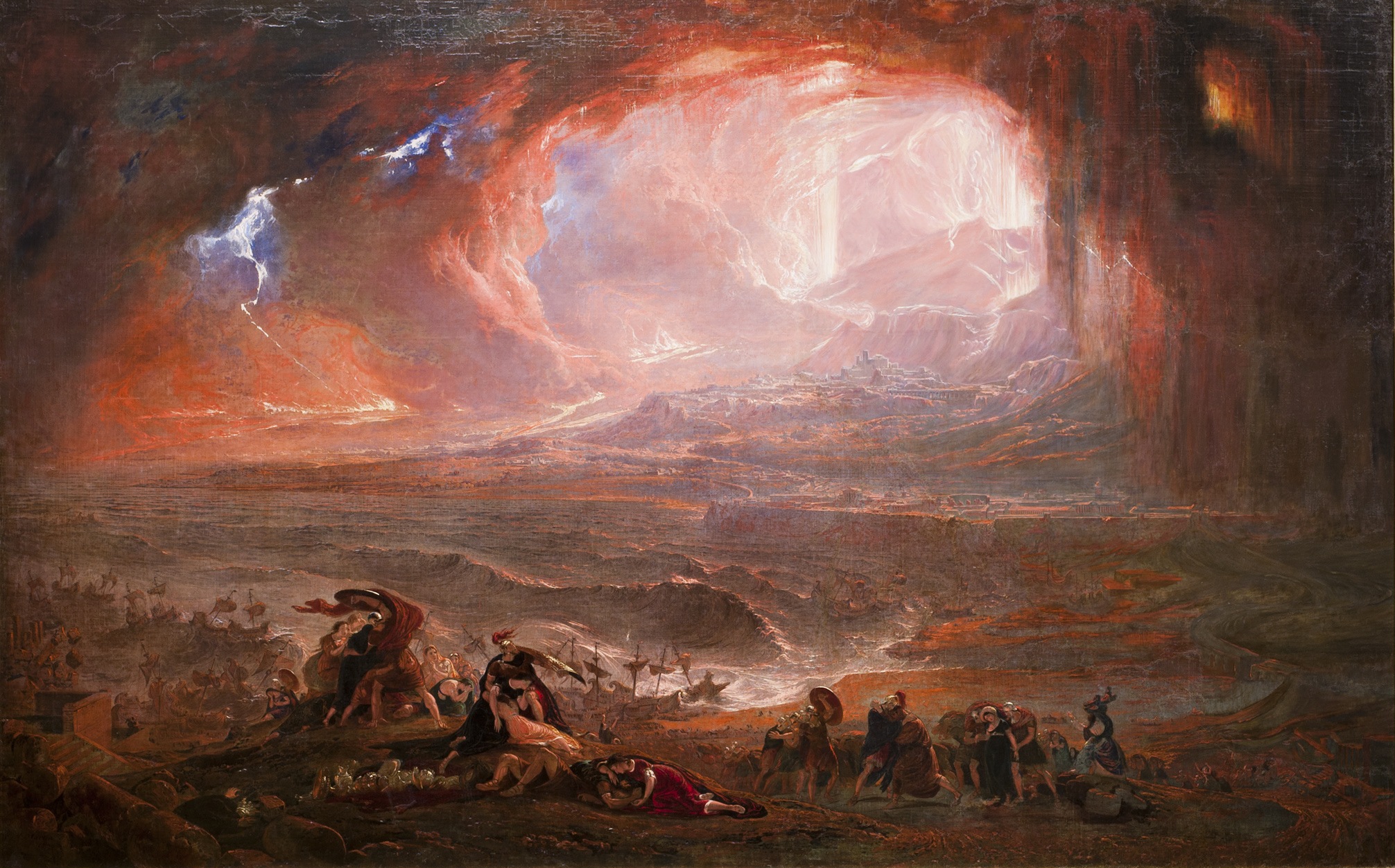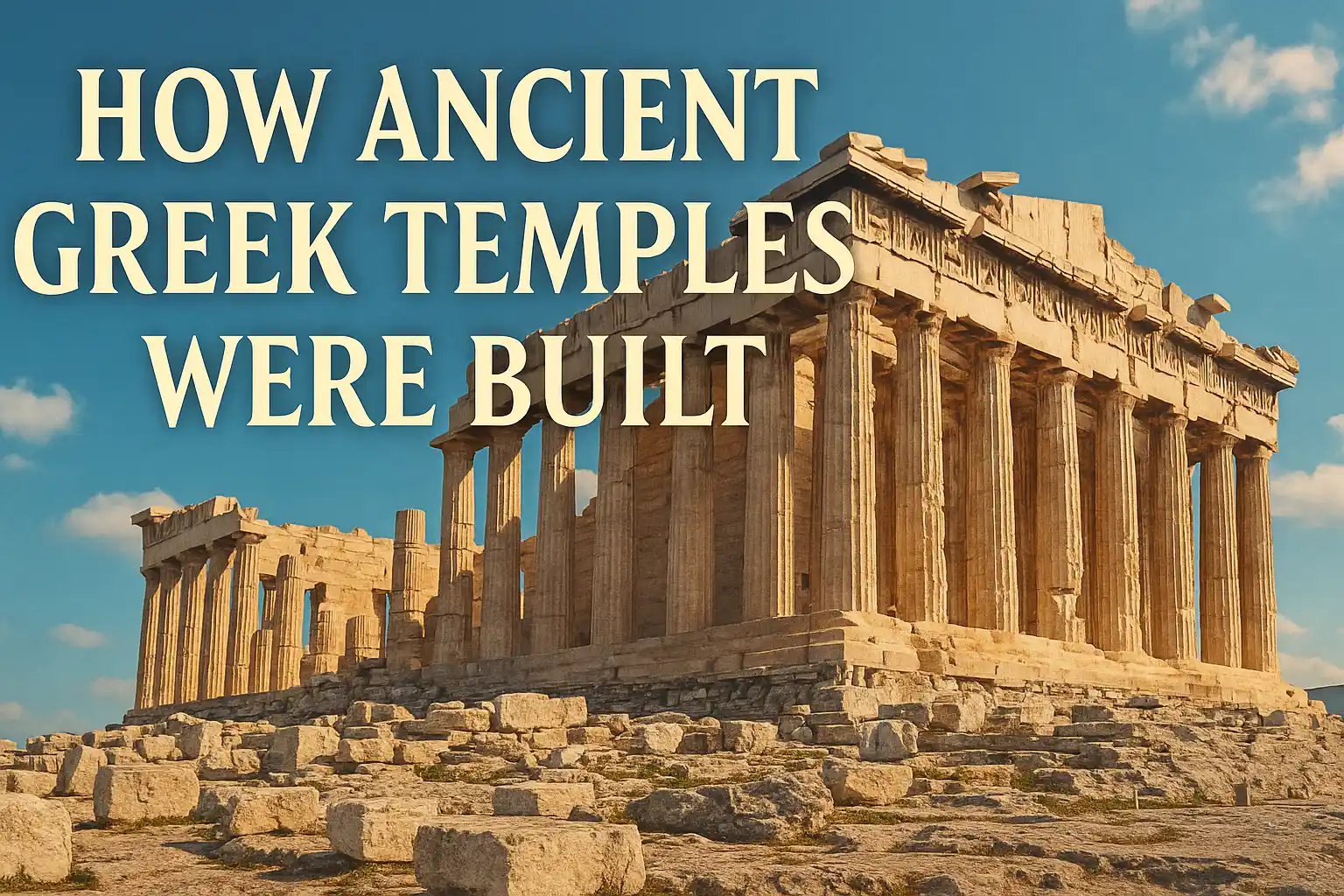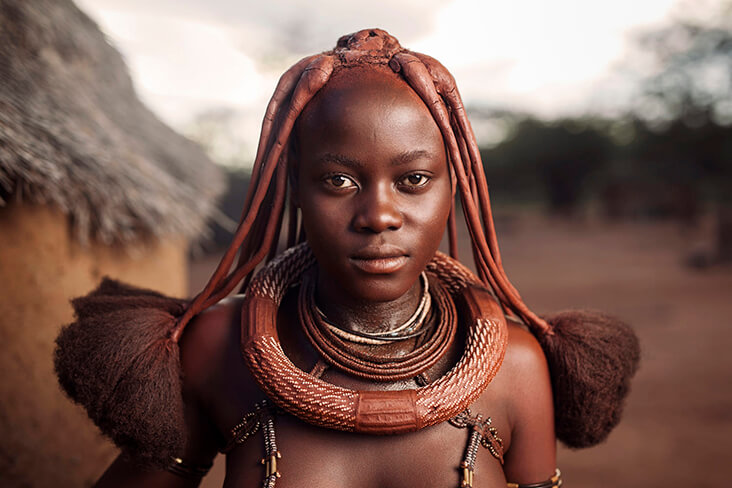
In ancient Greece, the horse was far more than an animal—it was a potent symbol of nobility, prestige, and divine favor. While much attention in classical studies focuses on temples, gods, and philosophers, equines quietly galloped through the background of aristocratic life, chariot races, Homeric tales, and funerary art. Understanding ancient Greek horse symbolism provides a deeper look into how the Greeks defined social class, military power, and heroic identity.
From bronze-age Mycenaean tombs to black-figure pottery and Olympic glory, the horse held an elite place in ancient Greek consciousness. This article explores the horse’s cultural weight in aristocratic values, mythology, warfare, and visual language across classical antiquity.
Horses and the Divine: Mythology as a Status Mirror
Horses appear frequently in Greek mythology, often associated with gods and heroes. Poseidon, god of the sea and earthquakes, was also worshipped as the creator of horses. According to myth, he struck the earth with his trident to produce the first horse, Skyphios, as a gift to humanity—or, in some variations, to win the heart of Demeter.
Horses thus had divine origins, and anyone who mastered them symbolically aligned with gods. This was a powerful message in a society that saw aristocratic bloodlines as reflections of divine will.
Centaurs—half-man, half-horse beings—symbolized the tension between untamed nature and noble control. While wild centaurs like Nessus represented danger, Chiron stood out as wise, noble, and educator to heroes like Achilles and Asclepius. Chiron embodied the ideal of aristocratic balance: strength, discipline, and intellect.
Equine Ownership as a Marker of Class
In the ancient Greek world, horses were expensive to raise and maintain. They required large estates with grazing lands, specialized care, and imported feed in many regions. As a result, horse ownership became a visible line between classes.
The Greek word hippeis, meaning horsemen, came to define the second-highest class in Solonian Athens. Below the pentakosiomedimnoi (landowners), the hippeis could afford to maintain cavalry mounts. Riding into battle—or even simply being seen with a horse—projected social superiority.
This wealth-based access to horses fueled the evolution of ancient Greek horse symbolism. Horses were not tools of transportation for the common man; they were emblems of elite status, galloping over fields of war and ceremony alike.
Horses in Warfare: Cavalry and Prestige
While early Greek armies centered on hoplite infantry, the rise of cavalry units offered a dramatic new way to project aristocratic strength. Thessaly, in northern Greece, was famous for its plains and powerful horsemen. Thessalian cavalry earned a fearsome reputation and often served as elite mercenaries for other Greek states.
Military prowess with horses became synonymous with nobility. In Athens, families that could equip their sons with horses were granted special recognition and military rank. To be a cavalryman (hippeus) meant not only wealth but honor—trusted with speed, reconnaissance, and decisive flanking maneuvers in battle.
In Sparta, horses were symbols of both wealth and discipline. While Spartan men rarely rode in combat, they trained elite young warriors in horsemanship as a mark of readiness and status.
According to the Metropolitan Museum of Art, horse gear found in burials suggests a warrior’s social identity was tied to his equine companion even in death.
Chariot Racing and Olympic Glory
No discussion of ancient Greek horse symbolism is complete without chariots. Chariot races were not just sporting events—they were pageants of wealth, prestige, and divine favor. Held during major festivals like the Olympic Games, these races allowed elite families to sponsor teams and showcase their status before panhellenic audiences.
Notably, it was the owner of the chariot, not the driver, who received the crown of victory. This custom reinforced the idea that breeding, training, and sponsoring horses was a noble act—even if someone else held the reins.
Themistocles, Alcibiades, and other Athenian nobles used chariot racing to promote their image. Some even entered multiple teams into the same race to increase their odds of winning and boosting their reputation.
Horses in this context symbolized not only speed and competition, but aristocratic patronage, civic pride, and equestrian nobility on a mythic scale.
Pottery, Sculpture, and Horse Iconography
Greek visual culture immortalized horses in every medium. Black-figure and red-figure pottery often depict warriors preparing for battle beside their horses, or athletes competing in chariot races. Horses also appear in votive offerings and on coins minted by aristocratic city-states.
A popular pottery motif features a young nobleman leading a horse, often interpreted as a rite-of-passage scene or a display of elite youth culture. Horses were synonymous with male virtue, discipline, and readiness for war or politics.
On funerary stelae (grave markers), horses symbolized a person’s heroic or high-status identity. A stele of a young cavalryman might show him atop his horse, reinforcing his family’s elevated place in society.
The Smithsonian Institution’s exhibition on horses reveals that ancient cultures, including Greece, used equine imagery to project both individual and communal power.
Homer and the Heroic Tradition
The Homeric epics—the Iliad and the Odyssey—are saturated with references to horses and chariots. Heroes are often praised as “breaker of horses,” an epithet signifying martial skill and aristocratic authority.
Achilles, the most revered hero of the Iliad, commands divine horses gifted by Poseidon. His chariot glides across the battlefield as a thunderous symbol of destiny and nobility. Likewise, Hector and other Trojans are described through their equestrian prowess, reinforcing the elite nature of mounted warfare.
In Homer’s world, to control a horse was to embody mastery over chaos—a metaphor for heroism, leadership, and control. This literary tradition reinforced ancient Greek horse symbolism as the ultimate expression of elite character.
Funeral Rituals and Equestrian Afterlives
Funerary customs among the Greek elite often included horses or horse imagery. In some regions, horses were sacrificed and buried alongside their owners—possibly to serve them in the afterlife. In others, painted tombs show the deceased riding heroically into the next world.
The symbolism here is layered: the horse represents not only prestige in life, but an ongoing journey after death. Tombs from Macedonia, Thessaly, and the Peloponnese frequently feature mounted figures or chariots drawn by galloping horses.
These images reaffirmed the aristocrat’s heroic identity and eternal nobility. In essence, horses became the bridge between life, status, and immortality.
Equestrian Women: A Rare but Noble Class
While men dominated Greek equestrian traditions, there are rare depictions of women on horseback. In myth, goddesses like Artemis and Athena are occasionally shown with horses, emphasizing their independence and martial power.
In Thessaly and other aristocratic regions, elite women might ride in processions or be buried with horse-related goods, suggesting their families viewed equine association as a marker of nobility, regardless of gender.
Such scenes challenge the stereotype of women’s invisibility in public life and reveal the deep cultural prestige attached to horses in every sphere of elite identity.
Philosophical and Poetic Interpretations
Beyond physical reality, horses served as metaphors in Greek philosophy and literature. Plato’s Phaedrus famously uses the charioteer allegory to describe the soul: two horses (one noble, one unruly) pulling the chariot of reason.
This metaphor reflected the Greek belief in the dual nature of man—passion and discipline in constant tension. To be aristocratic was to harness these forces in harmony.
Similarly, poets like Pindar used horse imagery to celebrate athletic victory and divine favor. His odes immortalize victors of chariot races, weaving equine glory into poetic eternity.
The Decline of the Horse as a Symbol
As Greek city-states gave way to Macedonian and Roman rule, the aristocratic symbolism of horses began to wane. The rise of professional armies and shifting political structures diminished the need for citizen-cavalry and public equestrian display.
However, the legacy endured. The Romans inherited much of Greek equestrian tradition, and throughout Western history, the image of the noble horseman retained its cultural weight.
From Renaissance paintings to neoclassical sculpture, the archetype of the mounted Greek warrior lived on—still proud, still noble, still a symbol of enduring status.
Conclusion: The Enduring Legacy of Ancient Greek Horse Symbolism
The horse galloped through ancient Greek history not just as an animal, but as a cultural icon. It embodied wealth, valor, divine favor, and elite identity. To ride a horse, sponsor a chariot team, or be buried with equine companions was to belong to the upper echelons of society.
Ancient Greek horse symbolism endures in our modern imagination because it was never just about the animal—it was about what the horse represented: power, legacy, and the disciplined grace of aristocracy. Whether painted on pottery, praised in verse, or raced at Olympia, the horse served as an eternal standard of honor and distinction in the classical world.
❓FAQ
Q1: What did horses symbolize in ancient Greek culture?
They represented nobility, divine favor, military prowess, and elite status—especially among aristocratic families.
Q2: Why were horses associated with aristocracy in Greece?
Only wealthy individuals could afford to raise and train horses, making them symbols of wealth and class distinction.
Q3: How did Greeks use horses in war?
Elite cavalry units and chariot warriors used horses in reconnaissance, flanking maneuvers, and symbolic displays of power.
Q4: Were horses used in Greek religious rituals?
Yes. Horses were sacred to gods like Poseidon and sometimes sacrificed during funerary or purification rituals.
Q5: What role did horses play in the Olympics?
Chariot racing was a major event sponsored by aristocrats. The horse owners, not the drivers, were declared victors.
Q6: Did women participate in equestrian culture?
Rarely, but in aristocratic regions like Thessaly, elite women may have ridden in public or ceremonial contexts.





